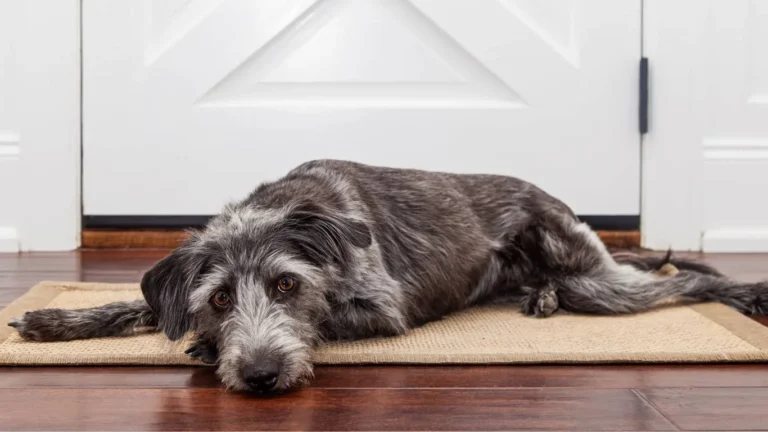Best Seeds for Hypertension Diet That Actually Help Lower BP
When I first started working as a Veterinary Assistant with a focus on pet nutrition, I didn’t expect to become *so* obsessed with ingredients—especially seeds. But here we are. Turns out, those tiny powerhouses aren’t just trendy for human snacks; they’re also surprisingly potent for managing things like hypertension. So if you’ve been wondering about the best seeds for hypertension diet, whether for you or your furry companion, stick around—we’re diving deep into why they matter and which ones actually deserve space in your pantry (and maybe your pet’s bowl too).
Why Seeds Deserve a Spot in Your Heart-Healthy Diet

Honestly, seeds often get overlooked. People focus so much on cutting sodium or avoiding fried stuff when dealing with high blood pressure, but they forget that adding *the right* foods is just as important. Seeds are tiny, yes—but they’re nutrient-dense, packed with good fats, fiber, plant-based protein, and minerals like magnesium and potassium, which help balance blood pressure naturally.
Back in the clinic, I started noticing a trend: pet owners who were into holistic nutrition were often way ahead of the curve. They’d ask if they could share flaxseed or chia with their dogs. And it got me curious—why not explore seeds as a supportive element in both human and pet hypertension care?
Meet the MVPs: The Best Seeds for Hypertension Diet
Let’s break it down. Here are some all-stars I personally love (and recommend) for anyone trying to manage hypertension:
- Flaxseeds – These little guys are loaded with omega-3 fatty acids, especially alpha-linolenic acid (ALA). That helps reduce inflammation, support heart health, and improve blood vessel function. I sprinkle ground flax on everything—smoothies, oatmeal, even in homemade dog treats (with vet approval, of course!).
- Chia Seeds – High in soluble fiber and antioxidants. I once had a senior dog patient whose owner mixed chia seeds into his food for joint support, but it turns out they’re great for humans dealing with blood pressure spikes too. The gel-like texture when soaked helps slow digestion, which steadies blood sugar and keeps things balanced.
- Pumpkin Seeds – These are rich in magnesium, one of those essential minerals that quietly works behind the scenes to regulate pressure in your arteries. Roasted and unsalted is the way to go. Bonus: dogs love ’em, too (in moderation and plain).
- Sunflower Seeds – Full of vitamin E and good fats. They’re known to help relax blood vessels. Just make sure to grab the unsalted kind—you don’t want to accidentally spike your sodium intake.
- Hemp Seeds – One of my personal faves. Creamy, nutty, and full of arginine, an amino acid that helps produce nitric oxide, which relaxes blood vessels and lowers blood pressure. Great in smoothies, pet-safe in small amounts, and totally underrated.
How Seeds Support Your Cardiovascular System

Here’s the science-y part (but I promise, no jargon overload). Seeds help reduce hypertension through a combo of effects:
- Magnesium & Potassium: These help regulate sodium levels and relax your arteries.
- Omega-3s: Lower inflammation, reduce arterial stiffness, and support heart rhythm.
- Fiber: Keeps cholesterol in check and slows down sugar absorption, which helps balance blood pressure.
- Plant Compounds: Think lignans and polyphenols—these have antioxidant effects that protect blood vessels.
When I was doing continuing education on pet cardiac health, I noticed the crossover in benefits between human and animal nutrition. It kind of blew my mind. Turns out, what’s good for us can often be adapted for pets—with proper guidance, of course. The overlap with seeds really stood out to me.
Simple Ways to Add Seeds to Your Daily Routine

If you’re like me, you don’t want to overhaul your whole life overnight. Good news—you don’t have to. Adding these seeds into your diet (and even your pet’s, if your vet gives the green light) is pretty easy:
- Morning boost: Stir ground flax or chia into your oatmeal or yogurt.
- Lunch sprinkle: Toss pumpkin or sunflower seeds on salads or soups.
- Snack smarter: Make homemade energy bites with a mix of hemp and chia.
- Pet-friendly treats: Try baking low-sodium, seed-infused dog biscuits (ask your vet about safe recipes).
Trust me, once you get into the habit, it becomes second nature. And the health benefits? So worth it. You’ll start noticing subtle shifts—more energy, steadier mood, even better digestion—and that all circles back to improved heart health.
Seed Swaps and Smart Substitutions for Everyday Meals

Okay, real talk—I used to think “healthy eating” meant saying goodbye to flavor. But once I started experimenting with seeds as substitutes in my own meals (and occasionally tweaking pet diets with the vet’s go-ahead), I realized it’s not about sacrifice—it’s about smart swaps.
Here are some everyday ideas for how to integrate the best seeds for hypertension diet without feeling like you’re eating cardboard or rabbit food:
- Breadcrumb replacement: Crushed pumpkin seeds mixed with ground flax make an amazing crunchy topping for casseroles or baked fish.
- Yogurt topper: Hemp seeds give a creamy texture and nutty flavor, plus that little boost of protein.
- Baking helper: Chia seeds can act as an egg replacement in baking (1 tbsp chia + 2.5 tbsp water = one egg), which is awesome for cutting cholesterol.
- Salad upgrade: Sunflower seeds bring both texture and heart-healthy fats to any boring bowl of greens. I even pack little pouches of them for on-the-go snacking.
One of my favorite little tricks is blending flaxseeds into homemade hummus. It gives it a thicker consistency and amps up the omega-3s—something that’s amazing for both you and, yes, dogs too (in seed oil form, properly dosed).
What to Look for When Buying Seeds

Now here’s the thing—not all seeds are created equal. I learned this the hard way when I bought a bag of sunflower seeds for a recipe and didn’t realize they were loaded with salt. Oops. Sodium city. It completely defeated the purpose of trying to eat for better blood pressure.
Here are a few pointers I’ve picked up over the years (and from working alongside nutrition-focused vets and holistic health experts):
- Go raw or unsalted. Always check the label. If there’s more than 50mg of sodium per serving, it’s not your friend.
- Organic isn’t just hype. Especially for flax and chia. These seeds are often grown in bulk, so choosing organic helps avoid pesticide residues.
- Ground vs. whole. For seeds like flax, always buy them ground or grind them yourself. Whole flax just passes through your system without getting absorbed.
- Check storage instructions. Seeds have oils that can go rancid. Store them in the fridge or freezer to keep them fresh longer.
I actually keep a little seed station in my kitchen—a row of glass jars with labels for each type. It makes it super easy to reach for the right one and keeps me consistent, even on those rushed weekday mornings.
Signs Your Body (and Pets!) Might Be Loving the Change

It’s funny how subtle the shifts can be at first. I remember adding hemp and pumpkin seeds to my meals consistently for a few weeks. I wasn’t expecting miracles—but suddenly, I noticed I wasn’t dragging in the afternoon anymore. My energy felt more even. And when I checked my blood pressure during a wellness check at work? It had dipped a few points in the right direction. No drastic changes, just steady, real progress.
And it’s not just me—I’ve heard similar stories from clients. One pet parent told me her senior dog had smoother energy levels after she started using a vet-approved omega supplement that included chia seed oil. Coincidence? Maybe. But also… maybe not.
Here are some signs the seeds might be doing their thing:
- More stable energy: Thanks to fiber and balanced fats.
- Better digestion: Seeds bulk up the stool (I know, not glamorous—but it matters).
- Improved mood and focus: Especially with hemp seeds, which support brain health.
- Noticeable BP readings: Over time, consistent intake of magnesium-rich seeds can support better blood pressure numbers.
And for your pets? Look for shinier coats, steadier behavior, and more comfortable movement. Always consult a vet before changing their diet, of course—but I’ve seen some beautiful transformations when done properly.
Getting Past the Skepticism
Look, I get it—sometimes these health tips feel a little too “granola,” right? I used to roll my eyes at all the seed hype too. But after seeing the results in both people and pets, I can’t ignore it anymore. There’s real science here, and even better—real-life proof.
My advice? Start slow. Don’t feel like you need to overhaul your kitchen in one go. Try a new seed each week. Add them to what you’re already eating. And most importantly—pay attention to how you feel. Your body’s feedback is the best kind of data.
Trust me, these tiny seeds are more powerful than they look. They’ve made a difference in my health and in the lives of the pets I care for every day. And they just might do the same for you.
Making the Best Seeds for Hypertension Diet Work Long-Term

Let’s be honest—sticking with any lifestyle change is the real challenge, right? At first, you’re all in. Meal prepped, Pinterest boards saved, maybe even a new blender sitting proudly on the counter. But a few weeks in? It’s easy to lose steam. That’s why I always encourage clients (and myself!) to think less in terms of strict “diets” and more about *building habits* that feel natural and enjoyable.
Incorporating the best seeds for hypertension diet doesn’t have to feel like a job. It can be something you look forward to—especially when you start noticing real results. I’ve seen that firsthand with clients, and I’ve experienced it myself.
One thing that’s helped me is setting up mini rituals. For example, every Sunday, I prep a jar of chia pudding for the week. Takes five minutes, and I can grab it before work or after walking the dog. Sprinkle on some hemp seeds or a few pumpkin seeds, and boom—heart-healthy, blood-pressure-friendly snack ready to go.

I know I keep mentioning dogs, but honestly, pets are a big part of why I’m so passionate about nutrition. Working as a Veterinary Assistant opened my eyes to how much our health and our pets’ health are connected—what we feed them matters just as much as what we put in our own bodies.
If you’ve got little ones (human or furry), there are totally ways to include them in this heart-healthy seed journey:
- DIY snack stations: Set up a tray with seeds, dried fruits, oats, and a bit of dark chocolate. Let the kids build their own snack mix. Bonus: sneak in some teaching moments about why these foods are good for the heart.
- Pet-safe treats: I sometimes bake homemade biscuits with ground flax or chia (always cleared with the vet first). They love it—and it’s fun to share a snack you both benefit from.
- Cooking together: Let kids sprinkle sunflower seeds on salads or help mix chia seeds into pancakes. Tiny tasks, but they build excitement and familiarity.
And don’t worry—this isn’t about perfection. Some weeks I forget to restock seeds, or I fall into a cereal rut. It happens. But every little effort counts, especially when you think long-term.
Frequently Asked Questions I Get at the Clinic
Over the years, I’ve been asked a *lot* of questions about seeds, especially from clients trying to manage their blood pressure without going overboard on meds. Here are a few of the most common:
Can I eat too many seeds?
Totally valid question. Yes, it’s possible. Seeds are calorie-dense, and some (like flax) can cause digestive upset if you go overboard. I usually recommend starting with 1–2 tablespoons per day, depending on your goals and how your body reacts.
Are these seeds safe for pets?
Some are, in moderation. For example, ground flax and chia are generally safe for dogs when introduced slowly and under vet supervision. Sunflower seeds? Only plain, unsalted, and shelled. Pumpkin seeds? Yes, but again—plain and in small amounts. Always check with your vet first.
Do I need to buy supplements?
Not necessarily. Whole food sources are best. That said, if your doctor recommends omega-3s or magnesium and you’re not getting enough through diet, a quality supplement can help fill the gaps. I prefer food-first, supplement-second.
How long before I see results?
It really depends on the person. Some people see improvements in their BP readings within a few weeks. For others, it’s more gradual. Think of this as part of a bigger lifestyle picture—hydration, stress management, sleep, movement—it all works together.
References
Disclaimer
This article is based on personal experience as a Veterinary Assistant with a focus on nutrition and is intended for informational purposes only. It should not be taken as medical advice. Always consult with a qualified healthcare provider or veterinarian before making significant changes to your or your pet’s diet—especially when managing health conditions like hypertension.
Here’s to making small changes that lead to big results—and feeling good while doing it. You’ve got this!






